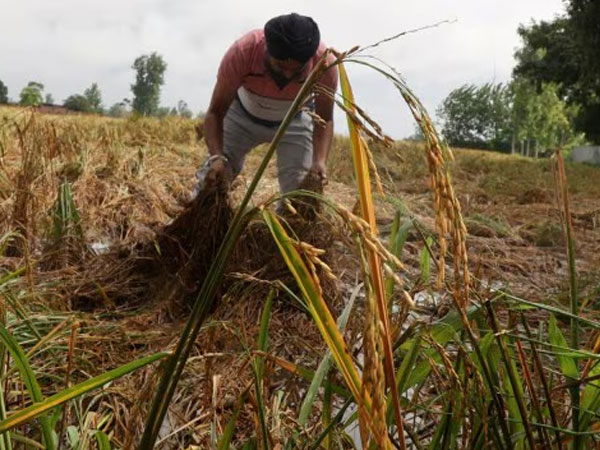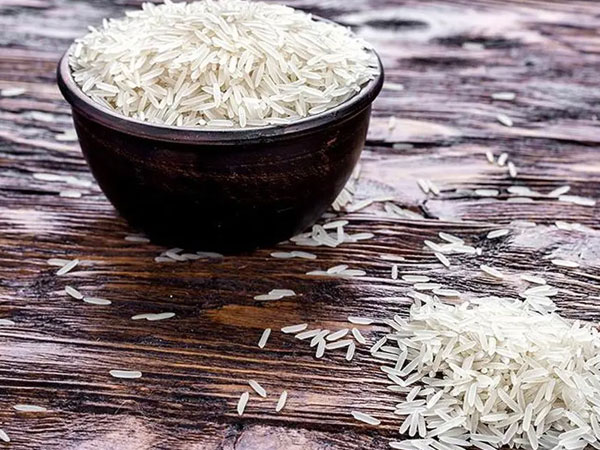 Experts and farmer unions demand a consistent and science-backed policy on hybrid paddy rather than reactive bans and sudden market shifts that leave both farmers and millers in the lurch
Experts and farmer unions demand a consistent and science-backed policy on hybrid paddy rather than reactive bans and sudden market shifts that leave both farmers and millers in the lurch
Making a surprise shift from their strong opposition last year, rice shellers in Punjab are now storing government-procured hybrid paddy varieties for the ongoing kharif marketing season — the same varieties they had refused to accept the previous year, citing low milling outturns — defying the state government-imposed ban on the sale of such seeds.
The reversal comes despite a legal battle over their usage earlier this year.
Last year, rice millers had protested against hybrid paddy, claiming it resulted in a lower outturn ratio (OTR), the proportion of rice obtained from paddy after milling, than what is mandated by the Food Corporation of India (FCI).
The FCI requires a minimum OTR of 67 per cent, while millers claimed only 60-63 per cent yield, causing a significant loss in the government procurement.
In response, the Punjab government banned the sale of hybrid (non-Basmati) paddy seeds in the state ahead of the 2025 kharif season, citing low OTR and high cost of seeds. The matter reached the courts, but by the time the verdict came, the sowing had been over.
Despite the ban, how did they sow hybrid seeds?
Despite a ban, a large number of farmers in Punjab procured hybrid seed from Haryana and Himachal Pradesh. The legal battle over the ban dragged on, and the verdict came after the sowing season. By that time, hybrid paddy had already been sown in several parts of Punjab.
Why are rice shellers now buying hybrid paddy?
Unpredictable weather, like incessant rains in early September and high temperatures in late September, disrupted flowering and pollination. Then sudden heat in early October and another spell of rain later damaged the crop further. The average yield reduced to 22-23 quintals per acre in many parts of Punjab against the average 28-30 quintals per acre earlier, worrying shellers that they won’t have enough paddy to keep their mills running. Thus, they prefer buying hybrid paddy than facing a shortfall, even as the OTR might be slightly lower.
“Left with no option, we have stored a large amount of hybrid varieties in our shellers this year. Despite a very low yield this year, we want to make our mills viable,” said a rice miller from Kapurthala district.
Asked about the OTR, he said the OTR might come good.
“Had we not procured hybrid paddy this year, our mills would have run out of stock,” said another rice miller in Ludhiana district. “Despite OTR losses, we prefer losses over sitting idle.”
What is the farmers’ reaction to the shellers’ sudden shift?
Farmers call it rice shellers’ hypocrisy. Hybrid varieties gave 5-6 quintals more per acre, but millers rejected them on the pretext of low OTR. This year, when the overall yield is down, the same shellers are buying all available hybrid varieties to maintain supply.
According to farmers, a more transparent, scientific and consistent approach is needed rather than banning high-yielding varieties and then quietly accepting them when convenient.
“Last year, we got 5-6 quintals more per acre from hybrid seeds, but millers refused to accept the produce. Now, when yields are low due to weather, they are buying every available hybrid variety,” said Baldev Singh, a farmer from Muktsar Sahib. “These double standard hurts farmers’ income and create uncertainty.”
What do experts say?
Many experts dispute the claim that hybrids inherently lead to low OTR and blame it on “improper harvesting and drying practices,” and not the seed variety, as often blamed.”
Besides, outdated machinery in many rice mills also contributes to the poor milling performance.
Experts suggest the Punjab government should regulate and monitor the sale of quality hybrid seeds rather than imposing blanket bans, because “once a hybrid seed is notified by the Centre, it cannot be legally banned by a state government under the Seed Act, 1966.”
Federation of Seed Industry of India chairman Ajai Rana said, “The hybrid paddy issue in Punjab highlights a deeper policy dilemma, balancing the interests of farmers, millers and the government in the face of legal, economic and environmental challenges. With changing climate patterns and rising demands for efficiency, Punjab may need to rethink its stance on hybrid seeds, not just season by season, but with a long-term strategy. This year, however, the situation on the ground has changed dramatically due to erratic weather conditions.”
Eight hybrid varieties, officially recommended for Punjab, are offered by companies such as Savannah, Bayer, Corteva and VNR. These varieties are known to yield up to 35-40 quintals per acre and mature in 125-130 days. Farmers say the advantages are critical given the state’s water and crop residue issues.
Experts and farmer unions demand a consistent and science-backed policy on hybrid paddy rather than reactive bans and sudden market shifts that leave both farmers and millers in the lurch.
With climate change adding unpredictability to agriculture, stakeholders say Punjab must chart a long-term path forward, one that balances yield, sustainability and processing standards without compromising either side, said an expert from the Punjab Agriculture Department.













© Copyright 2025 The SSResource Media.
All rights reserved.